If you have ever watched a real baitfish panic in shallow water, you will know why a multi jointed swimbait is such a problem for big predators. This 13.4 cm, roughly 18 g sinking wobbler is designed to copy that exact look – a slightly too-big, slightly too-slow meal that just cannot quite hold a straight line.
The listing describes it as a multi jointed sinking bait, swimbait, crankbait and minnow aimed at catfish, bass, trout and other predators, suitable for both fresh water and saline water, supplied as a single hard-bait in the colour you choose.1 That puts it firmly into the “do a bit of everything” category of hard swimbaits – and used properly, that is exactly what it does.
Why This Multi Jointed Swimbait Works
The basic recipe here is simple but effective:
- Length: 13.4 cm (a proper mouthful for bass, pike and bigger trout)
- Weight: around 18 g – easy to cast on medium or medium-heavy tackle
- Body: hard multi jointed swimbait with several segments
- Buoyancy: sinking – drops through the water column rather than hanging at the top
- Species listed: catfish, bass, redfish, trout and other predators
- Water type: fresh and salt water
- Package: 1 piece multi jointed sinking bait
Instead of a one-piece crankbait that simply wobbles, the segmented body on this multi jointed swimbait gives you that smooth S-curve swim with a bit of body roll – exactly the type of action Byron Velvick talks about in Bassmaster’s classic “Art of the Swimbait” series, where he explains why big, realistic swimmers can trigger the largest bass in the system.Bassmaster – Art of the Swimbait :contentReference[oaicite:1]{index=1}
Wired2Fish go a step further with hard, multi-jointed models. In their breakdown of when and how to fish multi jointed swimbaits, Cliff Pace explains that the segmented body lets you crawl the bait painfully slowly or wind it steadily, while still keeping an ultra-natural swimming motion – perfect when bass have seen a lot of simple squarebills and spinnerbaits. :contentReference[oaicite:2]{index=2}
Even if this is not a £30 collector’s bait, it is built around the same principle: realistic size, realistic silhouette, realistic motion. Put that in front of anything from a pike in a canal to a largemouth on a point, and it does not take much imagination to see it getting absolutely clattered.
How To Fish It
You do not need to over-complicate things, but you do want to fish this multi jointed swimbait with a bit of intent. It is a sinking hard bait, so think steady and deliberate rather than burn-and-hope.
1. Slow and steady retrieve
The safest way to start:
- Cast past your target – laydowns, weed edges, drop-offs, banks, rock walls.
- Let the bait sink on a semi-tight line to the depth you want. Count it down and remember roughly how long it took.
- Wind back at a slow to medium pace, rod tip down, just ticking it along.
The joints do the work, giving that S-curve swim at even low speeds. This is exactly what bass pros show off in videos like Wired2Fish’s “How to Fish Multi-Jointed Swimbaits for Fall Bass”, where the whole game is about a controlled, confident retrieve rather than panicked twitches.YouTube – How To Fish Multi-Jointed Swimbaits for Fall Bass :contentReference[oaicite:3]{index=3}
2. Stop–go and “wounded” behaviour
Because it is a sinking bait, you can make it look injured by mixing in pauses:
- Wind a few turns, then stop and let it sink a foot or two.
- Give the rod a short lift to kick it back into gear.
- Repeat all the way back, especially around cover and changes in depth.
Bassmaster’s swimbait tips often mention the “drop swim” – letting the bait fall and then slowly engaging it again – as a killer move for bigger fish that are watching from below.Bassmaster – Swimbaits and the Drop Swim :contentReference[oaicite:4]{index=4} This little jointed unit is tailor-made for that style of presentation.
3. Bank creeping and canal missions
On canals, small rivers and farm dams, this lure is a joy to simply parallel the bank with. Cast along the edge, count it down for a second or two, and just slow-roll the multi jointed swimbait back so it tracks close to the structure. Pike, zander, perch and bass all love that “one hapless baitfish on its own” look.
If you really want to nerd out on swimbait technique, MLF have an excellent video and article combination where Brandon Palaniuk gives a full “Swimbaits 101” lesson – rod angles, line choice, retrieve speeds, the lot.Swimbaits 101 with Brandon Palaniuk :contentReference[oaicite:5]{index=5} Everything he says about controlling a big bait applies just as well to this smaller 13.4 cm swimmer.
When To Use It
This is not a tiny finesse crank; it is a multi jointed swimbait that looks like a decent meal. That makes it ideal when:
- Fish are feeding on larger baitfish – think small roach, bluegill-sized fodder, stocker trout or 4–6 inch shad.
- Water has a bit of depth – perfect for 1–4 metres where a sinking bait can swim freely.
- You are target-hunting better fish – this is not a numbers bait; it is a “one or two proper bites” lure.
- There is moderate cover – weed edges, timber lines, rock seams and marina walls suit it perfectly.
Field & Stream’s recent best swimbaits for bass list makes the point that bigger, more realistic swimmers really come into their own when bass are keying on substantial prey and not just chewing on tiny fry. :contentReference[oaicite:6]{index=6} That is exactly where this lure slots in – big enough to stand out, small enough to fish on “normal” swimbait gear.
If you are heading into a period where you fancy trying bigger baits in general, Field & Stream’s “big baits, big bass” article is also worth a brew and a read.Field & Stream – Big Baits, Big Bass :contentReference[oaicite:7]{index=7}
Does It Actually Catch Fish?
Short answer: absolutely, as long as you commit to fishing it properly. Swimbaits in general have a slightly cult following for a reason – they consistently produce some of the biggest bass and pike of the year. Bassmaster’s swimbait features are full of stories of trophy fish that simply will not look at smaller offerings but happily eat a swimbait that matches their preferred prey size. :contentReference[oaicite:8]{index=8}
On the more everyday side, Reddit is full of “first swimbait fish” and “ready for swimbaits” posts from ordinary anglers who are stepping up from cranks and spinnerbaits and suddenly seeing a jump in average size.r/bassfishing – First swimbait fish :contentReference[oaicite:9]{index=9} A 13.4 cm multi jointed swimbait like this is a perfect way into that world without diving straight into huge, heavy baits.
If you want a confidence boost, Wired2Fish’s breakdown of swimbaits for bass fishing shows just how many different scenarios swimbaits excel in – from open-water shad chasers to shallow grass edges. :contentReference[oaicite:10]{index=10} This lure can plug into many of those roles in your own fishing.
Gear Pairing (with real internal links)
You do not need a broomstick to throw this bait, but you do want something with a bit of backbone. A 7’0″–7’6″ medium-heavy casting rod with a smooth baitcaster is ideal for bank and boat work. If you want to build out a little “swimbait corner” in your BassFishingTips.US line-up, here is how this lure can sit alongside other gear:
- Soft swimbait backup:
When the fish want something with a softer, more subtle tail thump, you can swap over to the
Esfishing Rockviber Shad Soft Baits
for a different profile at similar lengths. - Downsized option for pressured fish:
On days when a 13.4 cm multi jointed swimbait feels a bit much, the
Spinpoler Ajing Soft Swimbaits
let you show them a tiny, finesse swimbait instead of a full-meal deal. - Tuning and maintenance:
If you notice your multi jointed swimbait pulling to one side, Wired2Fish have a handy guide on
tuning a jointed swimbait in 90 seconds
so you can keep it tracking straight and true. :contentReference[oaicite:11]{index=11}
As you graduate into heavier swimbaits, it is worth checking out MLF’s and Bassmaster’s content on dedicated swimbait rods and reels, plus community threads like r/Fishing_Gear’s beginner swimbait setup discussion for real-world gear ideas.Beginner swimbait setup – r/Fishing_Gear :contentReference[oaicite:12]{index=12}
Specs
- Product name: 13.4cm 18g Bass Wobblers Lure Artificial Simulation Multi Jointed Sinking Bait Swimbait Crankbait Minnow Trout Pike Fishing Bait
- Lure type: Multi jointed swimbait / sinking hard wobbler
- Length: 13.4 cm
- Weight: approximately 18 g (from product title)
- Body style: segmented, multi-jointed baitfish profile
- Buoyancy: sinking
- Target species (from listing): catfish, bass, redfish, trout and other predators
- Water type: fresh water and saline water
- Packaging: 1 piece multi jointed sinking bait
- Materials: described as “high-quality materials” with quality assurance
- Dimensions (shipping): approx. 0.022 kg, 5 × 5 × 5 cm package size
FAQ – Multi Jointed Swimbait Questions Answered
Is this multi jointed swimbait only for bass?
No. The listing specifically mentions catfish, bass, redfish and trout, and the size makes it a solid choice for pike, zander, perch, seabass and other predators that regularly eat 10–15 cm baitfish. Treat it as a general-purpose predator lure rather than a species-locked bait.
Can I fish this on my normal medium rod?
At around 18 g, most medium or medium-heavy spinning and casting rods rated to about 20–30 g will handle this multi jointed swimbait just fine. If you get into heavier swimbaits later, you might want a dedicated rod, but this one is very manageable on “standard” gear.
Does a sinking multi jointed swimbait snag easily?
Any sinking lure can snag if you let it crash into rocks or timber, but you are in control. Count it down, keep the rod up a little over nasty stuff, and maintain contact. The smooth swimming action actually makes it easier to feel what the bait is doing than with some lighter cranks.
How fast should I retrieve it?
Start slow. The joints mean it swims well at a crawl. Speed up only when you know where the fish are and want to trigger a reaction bite. Watching a few swimbait tutorials on YouTube – such as general swimbait tip videos from channels featured by Major League Fishing – will give you a solid feel for retrieve speeds and cadences.
Is this a good “first swimbait”?
Yes – it hits a sweet spot. Big enough to tempt better fish, small and light enough that you do not need special tackle. If you read threads like “learn to fish big swim baits” on r/bassfishing, you will notice a lot of anglers recommending exactly this middle ground size to build confidence before going huge.
Final Verdict
If you fancy dipping properly into the swimbait world without remortgaging your house for collector baits, this 13.4 cm multi jointed swimbait is a cracking place to start. It is long enough to look like a serious meal, heavy enough to cast on normal gear, and realistic enough in the water to make predators think they are watching an injured fish rather than a chunk of plastic.
Fish it around points, weedlines, rock, marinas, canal walls and dam corners. Mix slow rolls with pauses, keep your drag set sensibly and do not be surprised if your average fish size jumps a notch.
It will not replace every lure in your box – but when you want to show them one convincing, panicked baitfish instead of another rattling crank, this is the one to clip on.
Clip this swimbait on, aim at something nasty-looking and expect violence – big fish absolutely love an easy jointed meal.



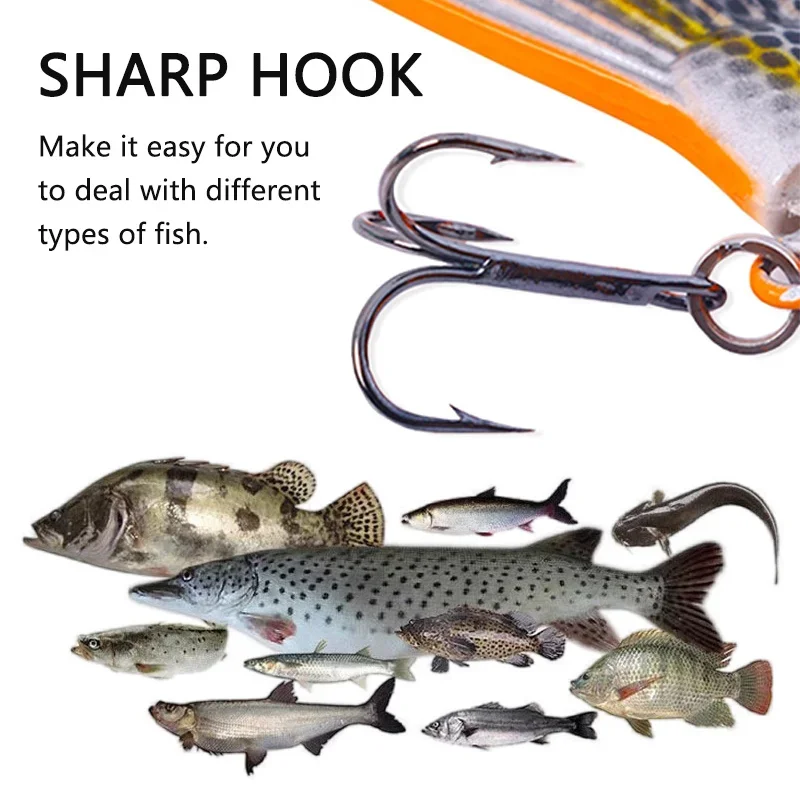


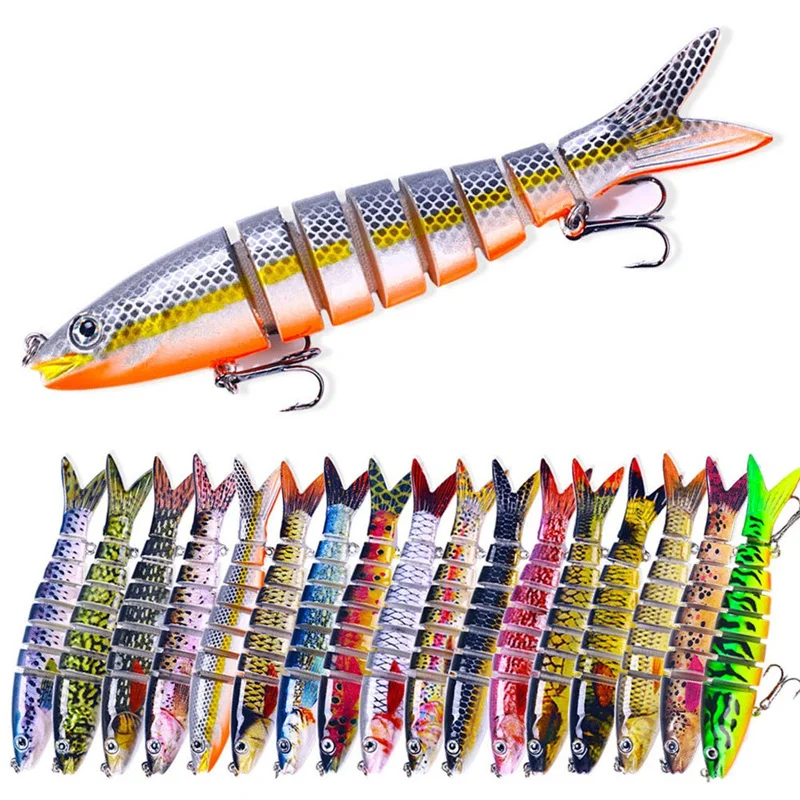


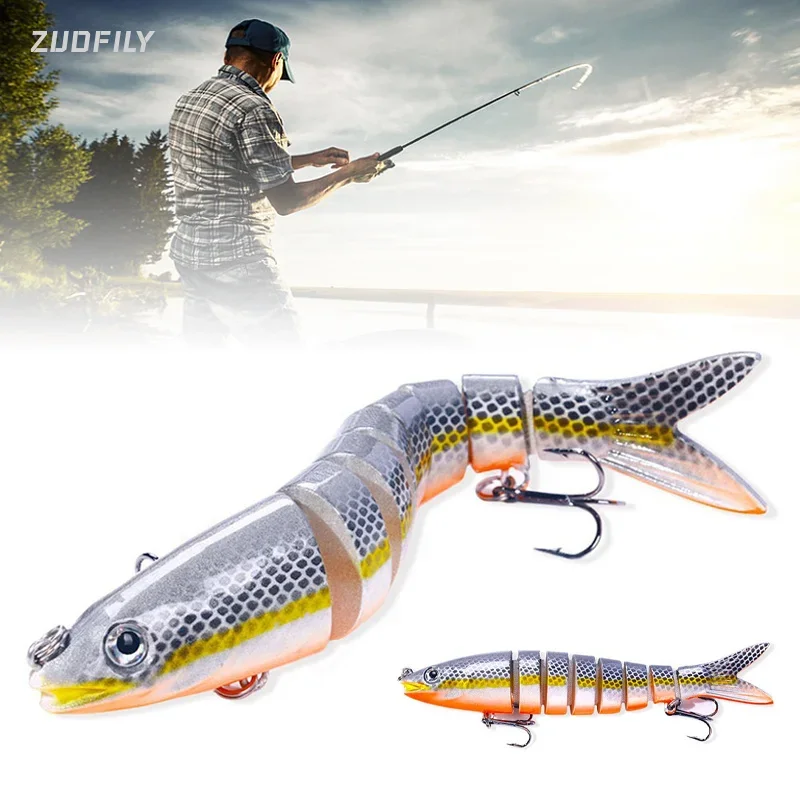


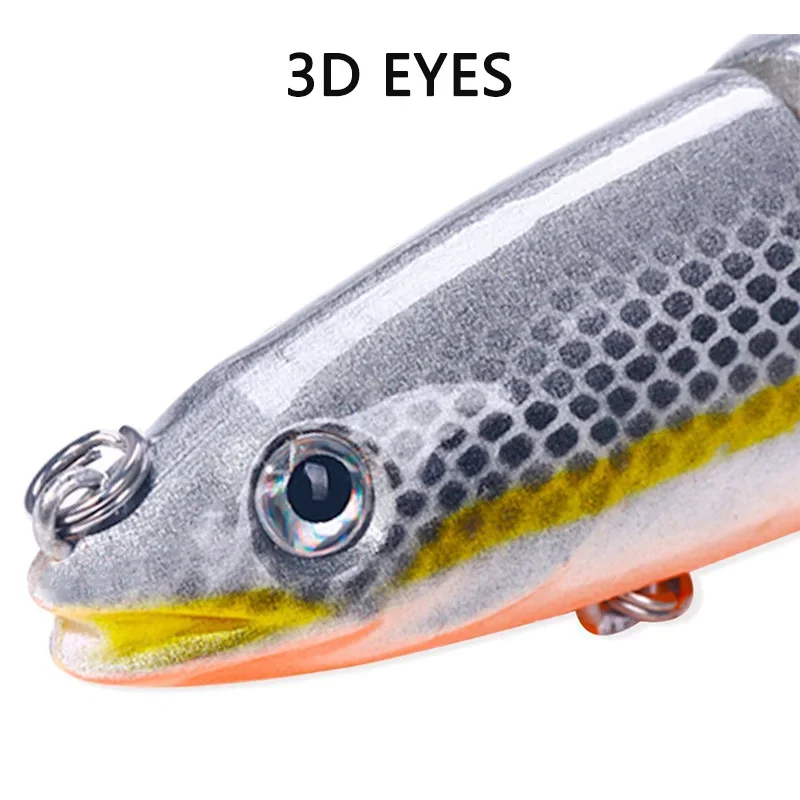
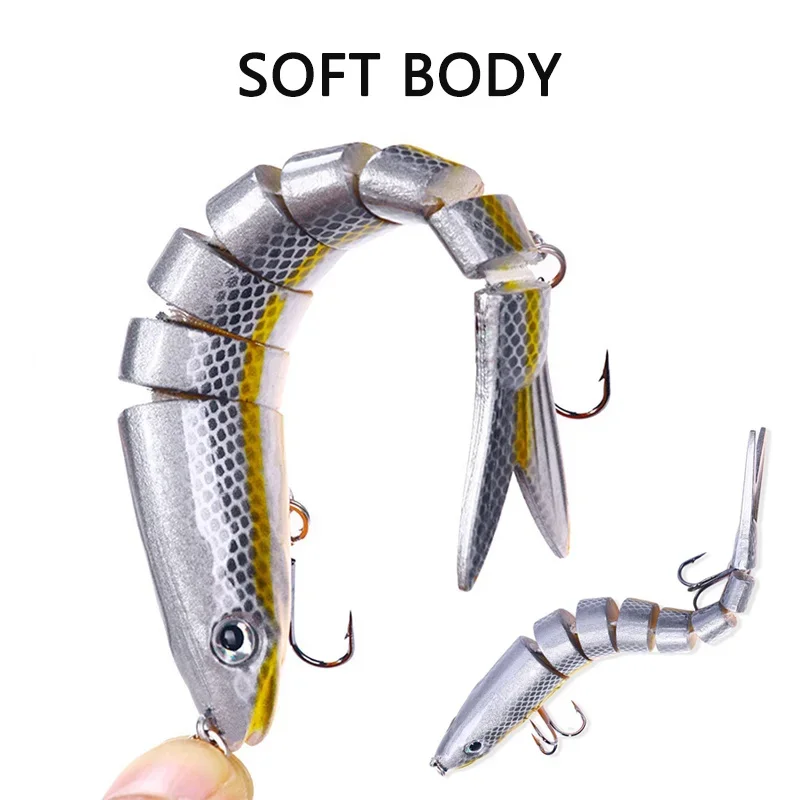


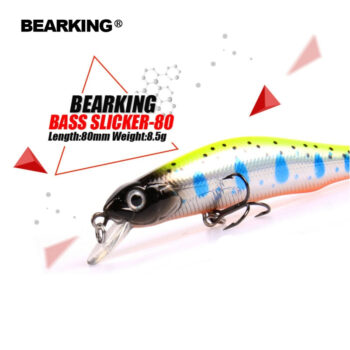
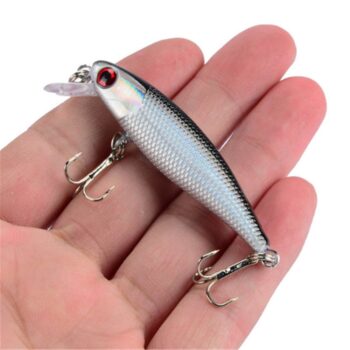

Real customer reviews